Return to Udvar-Hazy Center
Navaho Engine
The Navaho program was intended to produce an intercontinental cruise missile, able to hit targets in the Soviet Union. The missile was to be ramjet powered, but required rocket engines to accelerate the missile to the speed necessary for the ramjet to take over.
The engines developed for the Navaho are among the earliest large liquid-propellant engines developed in America. Rocketdyne: Powering Humans into Space provides a history of these engines: A captured V-2 engine was disassembled and studied by the group which would eventually become the Rocketdyne Division of North American Aviation; they created a 75,000 lb (or 75K) engine, known internally as "Engine One."
It quickly became apparent that the Navaho required additional thrust, so work on the 75K engine was discontinued for this effort (although the engine did evolve into the engine used for the Redstone). A 120K engine was developed; two of them were clustered together (before "cluster" became a term used to describe using multiple rocket engines). I'm not clear as to whether each individual engine or the pair collectively was referred to as the G26 or Navaho II engine, but it is a G26 (or a pair thereof) which is displayed by the museum.
Of course, the Navaho eventually required even more thrust, so they uprated the 120K engine to 135K and clustered three of them, resulting in the G38 or Navaho III engine.
Although the Navaho program was cancelled before it became operational, it provided a testbed for early rocket engine development. The 120K engine no longer used the formed and welded sheet metal construction (used on the 75K and Redstone engines); instead, it used the familiar brazed regenerative cooling tubes to form its thrust chamber. In another break from the V-2 and Redstone engines, which used a hydrogen peroxide decomposition steam generator to drive its turbopumps, the 120K used a bipropellant gas generator, using the same propellants as the main engines; this both simplified engine construction and firing and removed run time limitations (these earlier engines were limited by the size of their hydrogen peroxide tanks). And the Mark 3 turbopump, the turbopump which powered engines such as those used on the Thor and Atlas, as well the H-1 engine, the engine used on the Saturn I and Saturn IB, was introduced with the G26.
For additional information on the evolution of Rocketdyne rocket engines, see my Rocketdyne rocket engine family tree page. For more information on the Navaho program itself, see the former Space Launch Report.
While taking photos at the Air Zoo, I met a volunteer who was a Rocketdyne retiree. He worked on "the Hill," home of the Rocketdyne test stands. He told the story of how he would collect the firing key from the test console operator, put it on a lanyard around his neck, and then climb into each thrust chamber to install the engine igniter on the injector's face -- collecting the key ensured that there were no inadvertent "ignition" commands!
He also told me that the "G" in "G26" stood for "government" ("or at least that's what everybody said").
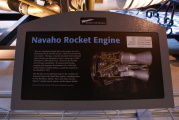 dsc77159.jpg |
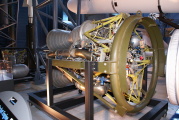 dsc77201.jpg |
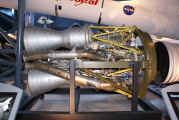 dsc77199.jpg |
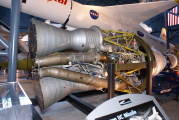 dsc77198.jpg |
 dsc77195.jpg |
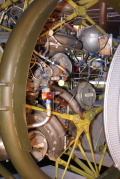 dsc77202.jpg |
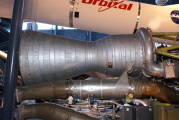 dsc77203.jpg |
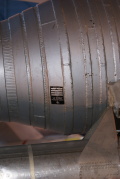 dsc77206.jpg |
Return to Udvar-Hazy Center